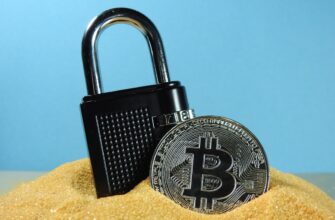How to Recover Your Crypto Wallet Safely: A Step-by-Step Guide
Losing access to your cryptocurrency wallet can feel like a nightmare. Whether you’ve forgotten a password, misplaced recovery phrases, or encountered technical issues, knowing how to recover crypto wallet safely is crucial to protecting your digital assets. This comprehensive guide walks you through secure recovery methods, common pitfalls to avoid, and best practices to prevent future lockouts. Follow these steps carefully to regain access without compromising security.
Understanding Crypto Wallet Recovery Fundamentals
Cryptocurrency wallets don’t store coins—they secure private keys that control your blockchain assets. Recovery relies on backup mechanisms like:
- Seed Phrases: 12-24 word mnemonic codes (the most critical recovery tool)
- Private Keys: Alphanumeric strings granting direct access
- Hardware Wallet Backup Files: Encrypted device exports
Never share these with anyone. Legitimate recovery requires no personal info beyond your backups.
Step-by-Step Guide to Safe Crypto Wallet Recovery
- Identify Your Wallet Type:
Determine if you use a software (MetaMask, Exodus), hardware (Ledger, Trezor), or custodial wallet (exchange-based). Recovery methods vary. - Locate Your Recovery Phrase/Private Key:
Find your physical or digital backup. Never enter it on suspicious websites. - Use Official Wallet Software:
Download the wallet’s app only from verified sources (official website/app stores). Avoid third-party tools. - Restore in Secure Environment:
Run recovery on a malware-free device offline if possible. Enable 2FA afterward. - Enter Backup Data Carefully:
Input seed phrases exactly (case-sensitive). Verify each word before confirming. - Test Small Transactions:
After recovery, send a tiny amount to another wallet to verify control before moving large sums.
Critical Mistakes to Avoid During Recovery
- Sharing recovery phrases via email/messaging apps (vulnerable to hacking)
- Using unofficial “wallet recovery services” (common scams)
- Storing digital backups in cloud drives without encryption
- Rushing through seed phrase entry (errors can create new inaccessible wallets)
- Ignoring software updates before recovery (compatibility issues)
Post-Recovery Security Best Practices
After regaining access, strengthen your defenses:
- Create multiple encrypted backups of seed phrases on steel plates or fireproof media
- Enable multi-factor authentication (2FA) using authenticator apps, not SMS
- Use a dedicated hardware wallet for long-term storage
- Regularly verify backup integrity and update storage locations
- Keep wallet software updated to patch vulnerabilities
FAQ: Crypto Wallet Recovery Explained
Q: Can I recover my wallet if I lost both password AND seed phrase?
A: Unfortunately, no. Without at least one authentication factor (seed phrase, private key, or password for non-custodial wallets), recovery is impossible due to blockchain’s decentralized nature.
Q: Are wallet recovery services legitimate?
A: Most are scams. Legitimate wallet providers never ask for recovery phrases. Only trust official support channels listed on verified websites.
Q: How long does wallet recovery take?
A: With correct backups, it takes minutes. Complex cases (e.g., damaged hardware wallets) may require manufacturer support and take days/weeks.
Q: Is it safe to recover a wallet on a public computer?
A: Absolutely not. Public devices may have keyloggers. Always use a trusted, malware-scanned private device.
Q: Can I change my seed phrase after recovery?
A: Yes. Transfer funds to a newly created wallet with a fresh seed phrase for enhanced security.
Final Tip: Treat recovery phrases like the keys to a vault—store them offline, redundantly, and secretly. Regular “recovery drills” ensure you’re prepared for real emergencies without panic.








